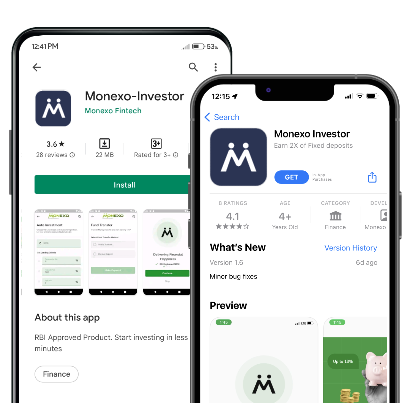Peer-to-peer lending (P2P lending), also referred to as marketplace lending, is a type of financing where individual savers invest in Retail Assets like personal loans, unsecured loans, micro finance loans, agri loans etc. In India, Reserve Bank of India issues license for conducting this business.
What Is P2P Lending In India?
Peer-to-peer lending platforms connect borrowers with one or more lenders. These borrowers are verified based on their creditworthiness like Income, Ability to payback, Credit Bureau report and a Video KYC is also done before disbursal.
Peer-to-Peer lending systems are 100% digital enabling a borrower to on onboard without use of paper. This digital journey enables P2P lending companies to onboard Borrowers without the need of a middleman as well as innovate on products.
Also, with no branch cost – P2P lenders can make the borrowing cost competitive and affordable.
How does it works?
You typically submit an application on an online financial platform for a peer-to-peer loan, including personal data, income, employment status, and credit score. The P2P lending platform will complete it’s screening and offer an interest rate to borrower based on the inherent risk or probability of default. Once the borrower accepts the offer the loan will be listed in the Marketplace.
How to Invest in Peer-to-Peer Lending
- To begin, you must first create an account on a peer-to-peer lending app.
- After that, you can consider your lending options. Most advanced P2P lending platforms like Monexo grade loans to make risk assessment easier, and some even provide automatic investing options.
- Following that, you must distribute funds and select an investment. For example: If you invest Rs. 100,000 as an Investor you will be able to diversify across 100 borrowers. This allows the Investors to have a lower risks.
- Finally, you can use the peer-to-peer lending app to track your earnings and the performance of your investments. After that, you can either withdraw or reinvest your winnings.
Advantages for the borrower
- If you have a good credit score and prefer a 100% digital process, P2P sites may be able to offer instant approval and faster disbursal – specially for small loans.
- Some websites may provide peer-to-peer loans to people with bad credit. They may also be more willing to lend smaller amounts than banks which focus on large loan amount t.
- If you no longer need the loan, you may be able to pay it off early or make an overpayment with no penalties on some platforms.
- Because the process is carried out online, it is usually quick and simple.
- Borrowing money can be done for a variety of reasons, including business purposes.
Advantages for the lender/investor
- It may be possible to obtain a much higher rate of return than is currently available from other investments such as bank deposits or bonds.
- You can choose the level of risk you’re willing to accept in terms of the borrowers to whom you lend money.
- There is no TDS deduction.
What’s the distinction between peer-to-peer lending and bank loans?
The main difference between peer-to-peer loans and bank loans is who funds them. A peer-to-peer loan is one that is made available by an internet lender comprised of an individual or a group of investors. A traditional bank loan is one obtained from a well-known financial institution, such as a small finance bank, NBFC or bank.
Many banks offer some of the lowest interest rates available, which benefits consumers with good credit. If you already have a traditional bank account, it may offer member benefits and incentives to people who apply for one of its personal loan products.
Peer-to-peer loans and bank loans have similar loan amounts and repayment terms, but if you need to borrow a smaller sum to tide you over, peer-to-peer lenders are more likely to offer loans with lower amounts.
Conclusion:
So P2P lending has a bright future, and it is undoubtedly a new age investment product for all. Before deciding on any investment opportunity, one must analyze and carefully consider all sides. P2P lending appears to hold the promise of generating a sustainable income through disciplined investing.
In terms of returns and profits, avoid putting a large sum of money into a single borrower; instead, diversify your portfolio by making your funds available to multiple borrowers, which reduces your investment default risk.
Even though peer-to-peer lending is catching up, there is still time for high-net-worth individuals and financial analysts to find a worthwhile replacement for tried-and-true, low-risk options like FDs, mutual funds, and stocks.
So put everything in your basket in order to diversify your income investment options using different investment strategies that P2P lending offers, allowing you to get the most bang for your buck as this appears to be the wise choice for everyone and anyone.




